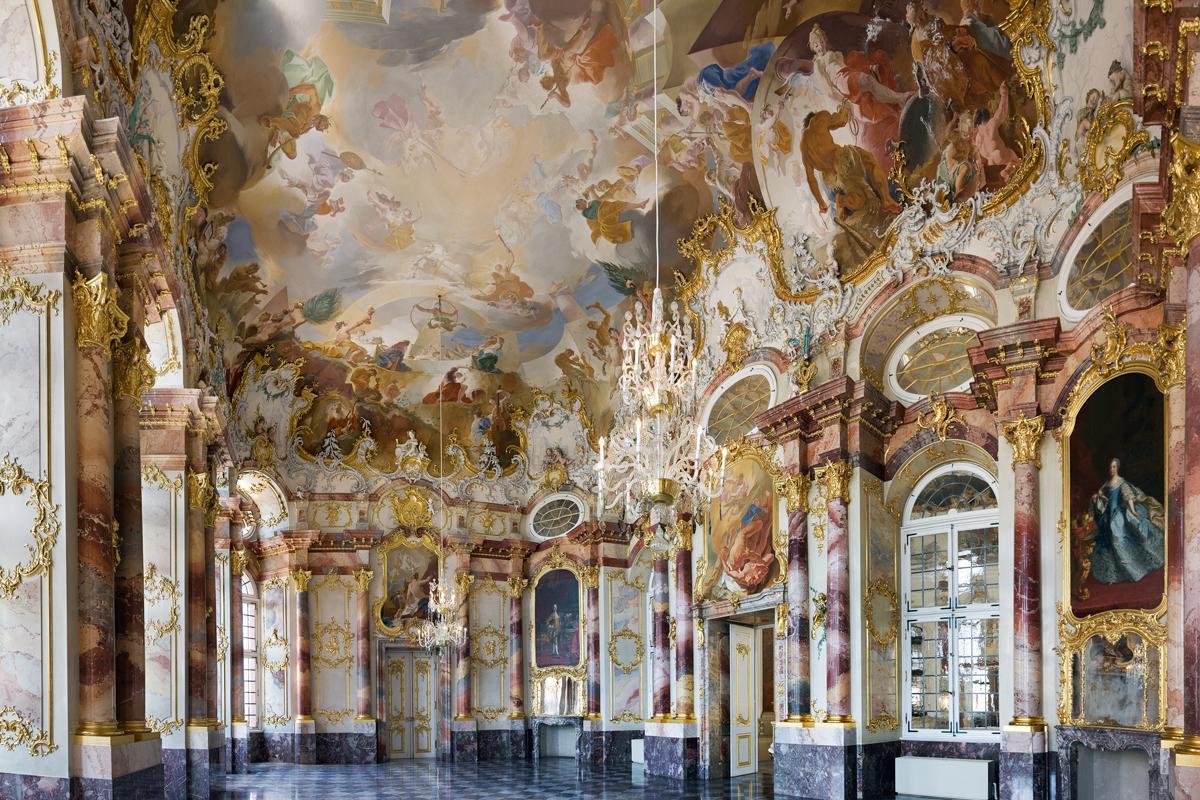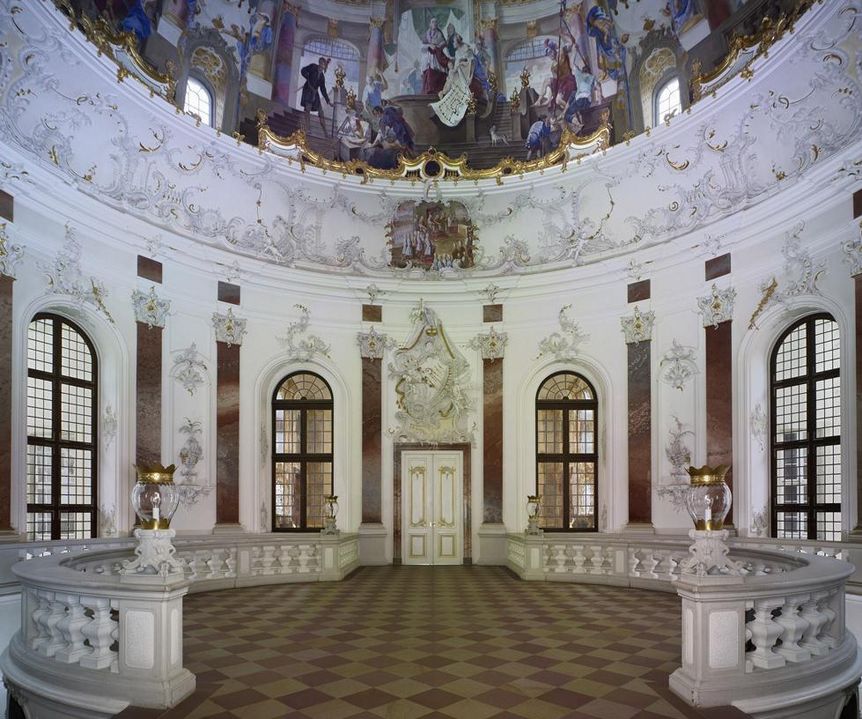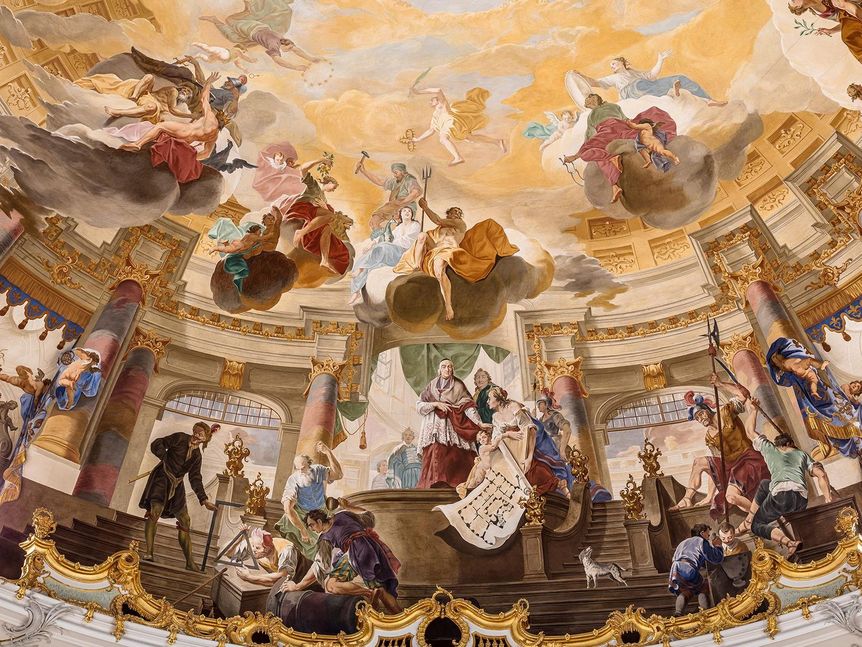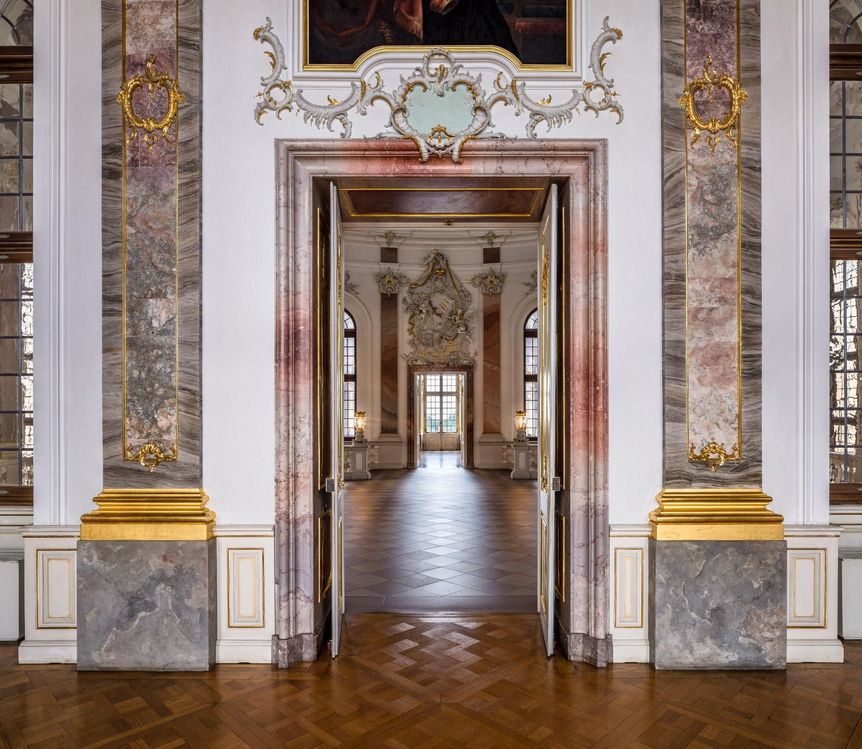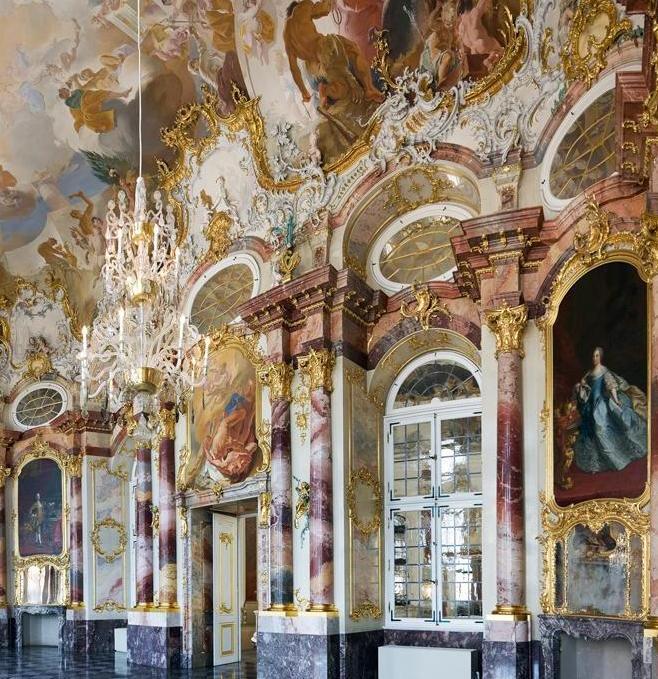Magnificent rooms in the palaceThe ceremonial halls
The three ceremonial halls in the representational bel étage of Bruchsal Palace are a Baroque and Rococo work of art. It was created between 1751 and 1754, during the reign of Prince-Bishop Franz Christoph von Hutten. The ceiling paintings in the halls honor the past, present, and future of the Bishopric of Speyer.



